The expansive Tiergarten is the oldest public park in Berlin. It is situated in the center of the city and boasts a large number of sights, including plenty of statues, memorials and even a palace.
History of the Park
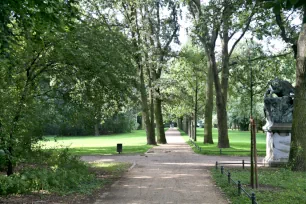
The 2.5 square kilometers (about one square mile) Tiergarten is the largest park in the city. Its more than 23 kilometers (14 miles) of pathways make it popular with those who are looking for a leisurely place to stroll.
For many years, however, the park wasn’t open to the public. It began its life as the preferred hunting ground for the electors of Brandenburg. It was Frederick I, the first Prussian king, who opened the park to the public, providing easy access to the Tiergarten by building roads and thruways.
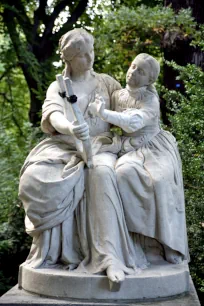
When Frederick II came into power, he hired George Wenzeslaus von Knobelsdorff (1742) to redesign the garden and give it a more Baroque feel. That survived for nearly a century, until Peter Joseph Lenné was commissioned to give the Tiergarten more of an English garden atmosphere.
The Berlin Zoo also took up residence in 1844, boasting thousands of animals whose antics were enjoyed on a daily basis by those who lived in and around the city.
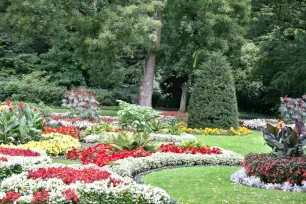

Unfortunately, much of the park was decimated during World War II, and in the years immediately following the war, cold Berliners cut down the remaining trees to use as firewood to heat their homes. Most of the animals perished as well. Records show that only 91 remained at the end of the war.
By 1955, however, local government saw fit to begin to restore the Tiergarten, and trees, shrubs, and plants were replaced, paths were rebuilt, and new attractions added.
These days, the park remains popular with walkers, joggers, and those seeking a little sun. However, there’s more to see in the Tiergarten than just trees and flowers.
Sights
The park is dotted with plenty of statuary – particularly statues glorifying hunting – and it is a fun challenge to try and discover them all. The park is also the setting of several memorials, including some of Berlin’s largest and most important.


Victory Column
The Tiergarten is bisected by the wide 17th of June Street (Straße des 17. Juni), which culminates in the Victory Column (Siegessäule), a red granite column crowned with the statue of a golden-hued goddess. The monument was built in the late nineteenth century to commemorate the Prussian victory in the Prusso-Danish war of 1864. If you’re up to climbing about 69 meters (226 ft.) to the top, you’ll be treated to an observation deck that provides excellent views over Tiergarten.
Bismarck Memorial
Right near the Victory Column is the Bismarck-Nationaldenkmal, a memorial that honors Otto von Bismarck, a Prussian statesman under whose leadership the many independent German states were unified into one powerful German Empire.
The memorial was built in 1901 by Reinhold Begas and shows Bismarck in uniform on a pedestal. Below him are allegorical statues of Atlas (who symbolizes the might of the German Empire), Siegfried (who symbolizes the power of the German army and industry), a sibyl (who symbolizes history), and Germania, the personification of Germany.
Soviet War Memorial
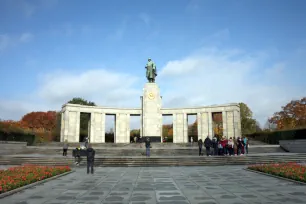
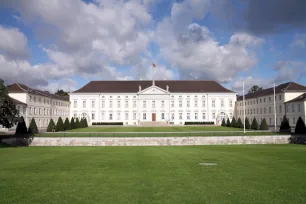
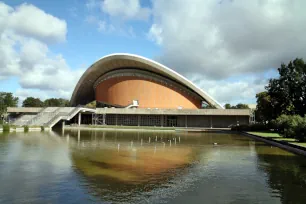
On the east side of the 17th of June Street stands a large memorial that commemorates the Soviet soldiers who died in the Battle of Berlin. The memorial was built shortly after the fall of Berlin and was made with marble taken from Hitler’s Chancellery. It consists of a colonnade flanked by two T-34 tanks. From the colonnade rises a massive column on which a statue of a Soviet soldier stands guard.
Bellevue Palace
Not far north from the Victory Column you’ll find the Schloss Bellevue or Bellevue Palace. The palace was built in 1786 for the Prussian Prince August Ferdinand. Today it is the official Berlin residence of the German President.
House of World Cultures
An eyecatcher in the Tiergarten is the Haus der Kulturen der Welt (House of World Cultures). The modern building with curved roof was built in 1957 as the United States entry for Interbau 57, an architecture exhibition held that year in Berlin. It currently houses exhibitions on world cultures.
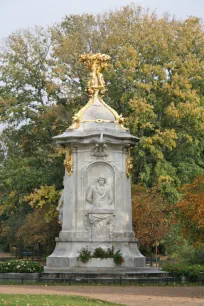

Beethoven-Haydn-Mozart Memorial
In the nineteenth century, Emperor Wilhelm II commissioned a monument to celebrate the composers Beethoven, Haydn and Mozart. The memorial was created by Rudolf Siemering who designed a ten-meter-high marble monument. It was erected in the east part of the Tiergarten, near the so-called Venus Pond.
The monument was heavily damaged during the Second World War and disassembled in 1996. The restoration of the monument started in 2000 and several years later it was reinstalled at its original location.
More Memorials
There are several more memorials in the Tiergarten. One of the most modern is the Memorial to the Sinti and Roma of Europe murdered under the Nationalist Socialist Regime. It commemorates the ‘gypsies’ who died during the Second World War. The monument, situated in the northeast corner of Tiergarten, consists of a triangular stone in a pool.
In the southeast corner of the Tiergarten is the Memorial to the persecuted homosexuals, which commemorates the homosexuals who were murdered under the Nationalist Socialist Regime. It consists of a cube with a small window. When looking through the window, you can see a film of two men kissing.

